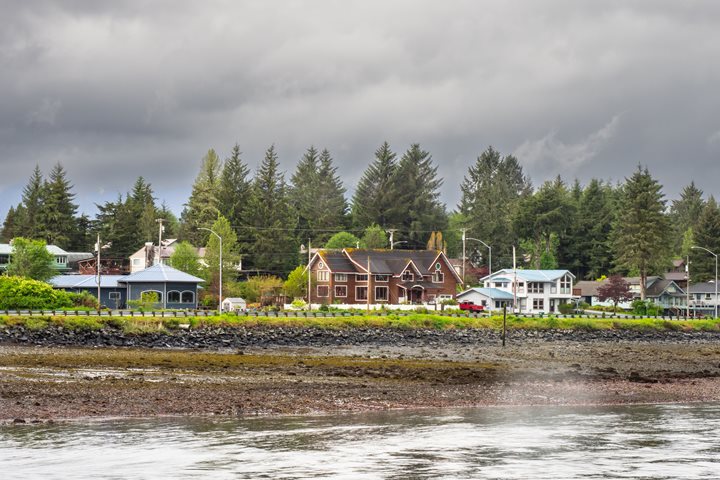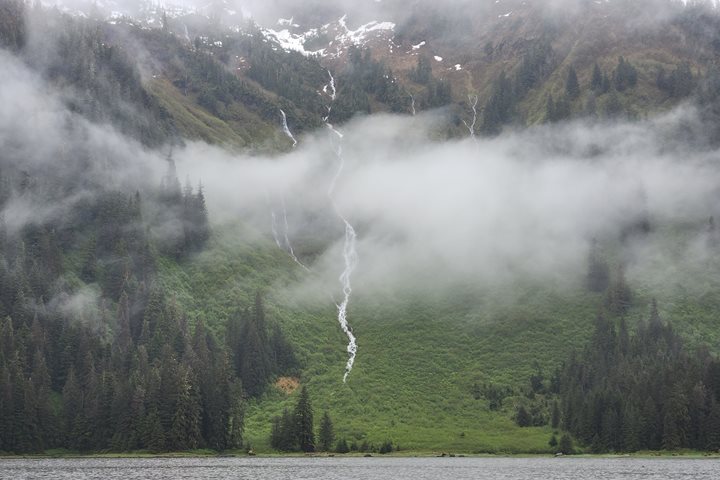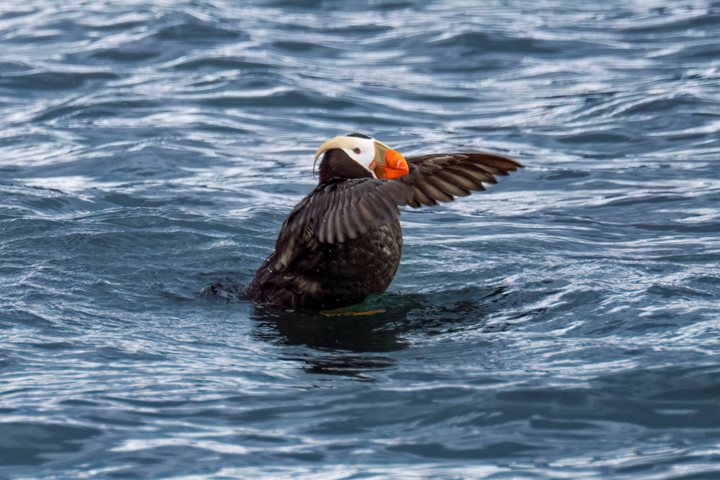The National Geographic Sea Bird glided gently past the seaweed-strewn shore of Kuiu Island before breakfast. Sunlight danced across the calm, silvery water that was punctuated by sea otters that paddled on their backs. Tiny eyes stared from fuzzy faces to watch our ship as we slowly motored through their realm. This area is also home to black bears, and we spotted one individual in the distance before heading to Halleck Harbor for a morning of hiking and kayaking. The geology and plant life here are very different from other landing sites on our itinerary. Tiny fossils of ancient brachiopods and other marine creatures were visible in the cliffs. Colorful harebells clung to the rock face, and maples and dogwood bushes grew nearby. Kayakers and those who opted for a cruise in one of our inflatables stopped by a native pictograph, a painting high above the water with a sun-like design. Hikers discovered all kinds of treasures, including crabs, old bones, immense trees, and numerous footprints left by elusive denizens of Southeast Alaska. There are no man-made trails here, only the paths tramped out by wolves and bears that wander the mudflats and then duck into the lush, old-growth forest. We traced their route across the open shoreline and into the trees and devil’s club of this wild landscape.
A totally different opportunity unfolded back on the ship. Those who dared participated in a “Polar Plunge,” a chance to jump into 49-degree water next to the ship. This might not be described as a “swim” but perhaps more of a very fast immersion followed by rapid levitation into an awaiting boat. The plunge provided quite a show for adoring parents along with other photographers.
The remainder of the day was dedicated to searching for marine life as we motored north. Shortly after a talk about bears, we picked up a whale researcher, Dr. Andy Szabo from the Alaska Whale Foundation, and Courtney Hann, one of his graduate students. Andy shared his wealth of knowledge and presented slides about humpback natural history and behavior. Almost on cue, several spouts appeared just as Andy finished speaking. We gathered on deck and watched one whale after another surface. In sequence, they then arched with raised flukes to provide thrust for deeper dives. Eight tales showed patterns ranging from nearly white to almost black with variations in between. These marks are distinctive and can be used to identify individual animals in the same manner as fingerprints can be for humans. Andy interpreted the behavior of this group as we continued to watch. He said that they appeared to be searching for prey but not successfully locating anything. The tall, bushy spouts contrasted dramatically against the dark background of forest.
During dinner, we encountered a different group of humpbacks involved in bubble-net feeding. This feeding strategy is extraordinary and is not often seen outside of Alaska. Many of us abandoned the dining room and later returned to wolf down our food before returning to the bow. A hydrophone provided the real-time audio just prior to the surface lunging of the mass of whales. What a fantastic way to end the day!







